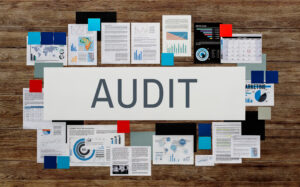ISO 9001 Lead Auditor Best Practices for Effective Audits
ISO 9001 Lead Auditors play a crucial role in evaluating an organization’s quality management system (QMS). To ensure audits are effective, it’s essential to follow best practices that not only guarantee compliance with ISO 9001 standards but also foster continuous improvement. In this article, we will explore the best practices that Lead Auditors can apply to perform successful and impactful audits.
1. Audit Planning Best Practices
Effective audit planning is the foundation of a successful ISO 9001 audit. By preparing thoroughly, Lead Auditors can ensure a comprehensive and smooth audit process:
- Define the Audit Scope Clearly: Understand the objectives of the audit and specify the areas of the QMS to be evaluated.
- Identify Risks and Critical Areas: Consider areas of the organization that may present greater risks or have a higher impact on quality to prioritize during the audit.
- Prepare the Audit Team: Assign roles to the audit team members and ensure that everyone is briefed on the audit process and their specific responsibilities.
2. Audit Execution Best Practices
During the audit, Lead Auditors must ensure that the process is carried out effectively and efficiently. Key practices for conducting a successful audit include:
- Follow the Audit Plan: Stick to the schedule and ensure all areas are covered as planned, making adjustments as necessary.
- Engage with Staff: Conduct interviews with relevant personnel and observe operations to gather evidence and assess compliance with ISO 9001.
- Document Findings Promptly: Record non-conformities, observations, and areas of good practice during the audit, making sure that all findings are supported by objective evidence.
3. Effective Communication During the Audit
Clear communication is vital for an effective audit. Lead Auditors must foster an environment of openness and transparency throughout the process:
- Maintain Professionalism: Communicate findings and concerns in a professional, constructive, and non-confrontational manner.
- Provide Regular Feedback: Share preliminary findings with management and staff during the audit to ensure clarity and address any misunderstandings early on.
- Clarify Expectations: Set clear expectations for corrective actions and improvements, ensuring everyone understands their role in resolving non-conformities.
4. Reporting Best Practices
Once the audit is complete, the Lead Auditor’s role shifts to reporting findings and recommending improvements. The reporting phase is critical to ensuring that the audit delivers value:
- Clear and Concise Reporting: Write audit reports that are clear, concise, and free from ambiguity, highlighting key findings and suggested corrective actions.
- Focus on Actionable Recommendations: Ensure that the audit report includes actionable recommendations that lead to tangible improvements in the organization’s QMS.
- Ensure Transparency: Be transparent about audit findings and ensure that both strengths and weaknesses are accurately reported.
Conclusion
By following these best practices, ISO 9001 Lead Auditors can conduct more effective audits that not only ensure compliance but also drive continuous improvement within an organization. The key to successful auditing lies in thorough planning, strong communication, and the ability to provide actionable feedback. For more details on becoming an ISO 9001 Lead Auditor or advancing your auditing career, visit QMII's registration page.



